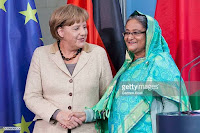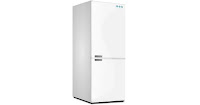The beginnings of - computer science
Is the true beginning of computer science
Through Alan Turing's theoretical and later practical research. The development of modern computers began in the middle of the twentieth century. The invention of the microprocessor in 1971 led to the rapid development of the microcomputer. There are many types of low cost personal computers or PCs in the market.
★First of all in all cases
Computers are being used in every aspect of human life. That is why it may be easier to find the answer to the question of where the computer is not used and where it is not used. At present advanced management, production, research, telecommunication, publishing cannot be imagined without computer. Basically people use computers to improve their work. Computers are used in office management, industry, printing, communication, medicine, research, banking, courts, military, financial markets, agriculture, culture and entertainment, statistics, design, and weather forecasting. Everywhere from reading tables to video libraries, offices, department centers and hotels, the use of computers in all fields is increasing at an incredible pace day by day.
★Expensive computer MJ
The most expensive computer in the world is MJ's Sarovsky and Diamond Studed Notebook. Ukrainian art studio MJ has launched a laptop with state-of-the-art technology for luxury gadget lunatics. They decorated it with diamond pieces and gold. It has been priced at 3.5 million.
This is by far the most expensive computer on the market. Other expensive brands on the market include Asus, Lamborghini Platinum Crocodile, Asian Ferrari Gold Python, Sony Vio Blackwood, Asus Apec VIP Sarovsky. Snap and crocodile skins, gold mice and much more have been added to some parts of the luxury laptop.
★The first internet connection
The first internet project started in 1968. The initial phase of this project was called Arpanet, it started at the US Department of Defense. The purpose of the Ministry of Defense was to establish communication between the military and the government and to exchange information. The Arpanet network system later became the world's only Internet name. On November 21, 1969 (Interface message processor) the first communication between two remote computers was established with the help of IMP. The IPM # 1 computer was located in Los Angeles and the IPM # 2 computer was located at Stanford Research Institute-G in Menlo Park, California.
★There are many differences from generation to generation
The computers that were made between 1942 and 1955 are called first generation computers. The main component of these was the vacuum tube. Although these computers had many advantages as a symbol of technological advancement, they also had some disadvantages in practical terms. The computers that were available between 1955 and 1964 were called second generation computers. These are equipped with transistors instead of vacuum tubes through advanced technology. The components of these computers were relatively small in size. Then came the third generation. These came on the market from 1964 to 1975. Throughout the course of evolution, advanced technology has been applied to third-generation computers through continuous research. Integrated circuits (ICs) have taken the place of third-generation computers, which are usually limited to a very small piece of silicon. The technology used by ICs is called Large Scale Integration (LSI) technology. In 1975 and later, third generation LSI technology was replaced by fourth generation computers using very large scale integration technology or DSLI technology. Microprocessors are installed in computers based on this technology. Naturally, its practical benefits increased many times. Production costs came down a lot. The format of the data was simplified, the memory was very strong and these were made quite small in size. The cost of electricity has come down a lot. Now in the process of creating a fifth generation computer, research is underway to innovate more advanced and refined technology. The application of optic fiber technology has already started.
★Computers based on structure and circulation principles
Computers can be divided into 3 parts on the basis of structure and circulation principles. Analog, digital and hybrid computers. Digital computers can be further divided into 4 categories based on size, capability, price and importance of use.
1. Micro
2. Mini
3. Mainframe and
4. Super computer.
Microcomputers also have 2 parts. Such as desktops and laptops. An analog computer can measure one quantity relative to another. It can record temperature or other measurements that change regularly. Digital computers, on the other hand, express everything by two types of electrical voltage. It can complete any math addition process. Meanwhile, hybrid computers consist of the best features of analog and digital computers. It is also used in scientific research. Microcomputers are also called personal computers or PCs. It has an interface chip, a microprocessor, CPU, RAM, ROM, hard disk, etc. The use of this computer can be seen in all aspects of daily life. On the other hand, a mini computer can be installed in a terminal and used by more than half a hundred users at a time. Mainframe computers are used for important and large applications, such as population, industry and consumer statistics, enterprise resource planning, and transaction processing. A computer that is extremely powerful and fast is called a supercomputer. Its speed is about 1 billion characters per second. It is used to manage huge data like a country's census. At present tablet computer has gained popularity as a type of microcomputer. It is a touchscreen technology. It runs on Android and Windows operating systems.
★Revolutionary change
Today, the appearance of the computer is a product of the long journey of technological evolution. Added to this evolution were the Abacus, Pascal's mechanical calculator, Charles Babbage's differential engine, the electric number calculator or electronic numeric integrator and calculator, the universal automatic computer or the universal automatic computer. From about 3000 BC, computers and their technological advances continued through various stages of evolution. Microprocessor-based computers began to appear on the market after Intel Corporation of America invented the microprocessor in 1971. Since then a great revolution has taken place in the shape and function of computers. IBM's personal computer or PC came on the market in 1981. One by one, high-powered microprocessors were invented and powerful PCs were created.
★Advantages and disadvantages
There is no such thing as a computer to produce a huge amount of information at high speed. Computers have brought perfect success in various tasks of human beings. So it can be said that computer enhances our work efficiency. With computer you can find any information instantly. A big part of the advantages of discussing the advantages and disadvantages of computers is the Internet. With this technology you will be able to connect with every place in the world. Another advantage of the computer is the multimedia device. We can use different types of applications such as listening to music, playing games, etc. A lot of information can be stored in the computer. Eighty percent of the world's people use computers for online commerce. Fifty percent of the world's people now acquire educational knowledge through websites. However, the use of computers has caused some problems in the society. For example, long-term use of computer has a negative effect on the eyes. Toxic material from broken computer parts can spread to the environment. Many people waste time and energy playing games and chatting on social media. There are many who use computers for negative activities. They hack into people's credit card numbers. Again, many times they steal the information of big organizations and put them in trouble. One of the inventions of computer is the use of robots, unemployment is increasing in the society.








